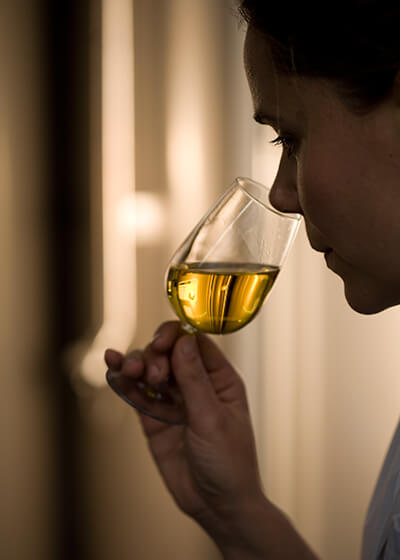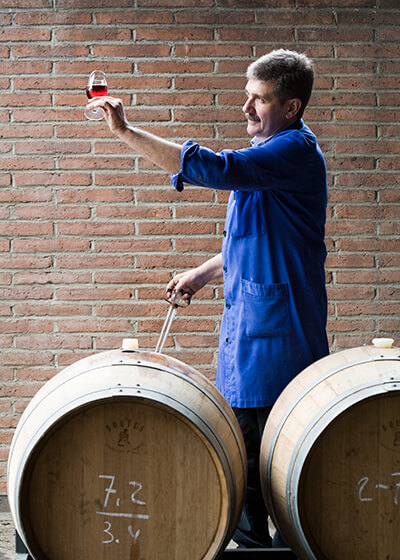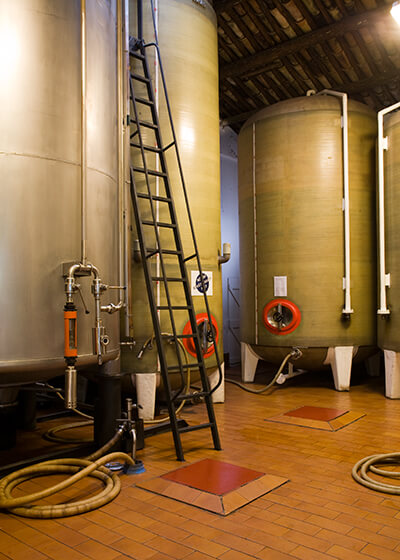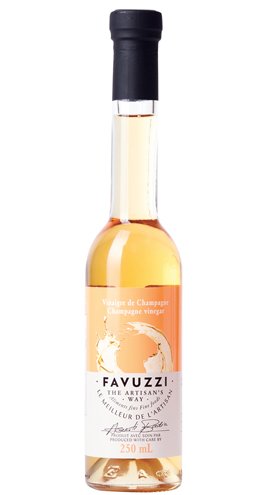Vinegars
Champagne vinegar
Description
Vinegar with a light golden colour and bright fresh fruit aroma, with a hint of minerality. Its sweet taste, featuring just a touch of acidity, reveals notes of pear and pie spices.
Uses
Heavenly in a mignonette served with oysters. Combine it with our lemon olive oil and our fleur de sel to make a vinaigrette. Use it to marinate fresh fish for a delicious ceviche or carpaccio. Add a few drops to a glass of bubbly wine to enhance depth and acidity.
Distinctives attributes
A delicate vinegar with fresh and fruity notes, made with chardonnay vinegar aged 12 months in oak casks and vinegar from the Champagne-Ardenne region. The "champagne" name is protected by a designation of origin (PDO). Producers can use the name on their labels on the condition that their products include a certain percentage of champagne from France's Champagne region. This vinegar is crafted according to a method invented in 1823 by German chemist Schützenbach. Unlike most commercial vinegars, it undergoes a long aging process. Ten times slower than usual industrial techniques, the Schützenbach method consists in exposing the alcohol to the air as much as possible by circulating the vinegar in various sections of a large tank. The greater contact area between air and alcohol intensifies the transformation of alcohol to vinegar by bacteria. This method allows the vinegar to better retain the flavours and aromas of the base wine, while also imparting a mellower taste.
Artisan
Founded in 1908 by Agustin Badia Badia, the company was originally dedicated to making and selling wine. It has changed a lot over five generations: still a family business operated by the Badias, it now specializes in making artisanal vinegars of the finest quality, combining over a century of experience with modern technology.
Origin
Champagne (France), transformed into vinegar according to the Schützenbach method in Lleida, Catalonia, Spain.
History and anecdotes
To preserve as many nuances and organoleptic properties as possible, Badia chooses to age its vinegars using the Schützenbach method, named after the German chemist who invented it in 1823. This method calls for a cylindrical container divided in three horizontal sections. Wine is first poured into the upper section and trickles down, flowing through the main middle section. The latter is filled with permeable, spherical material, offering a vast contact surface for acetic bacteria to grow and allowing for free air circulation underneath. The wine undergoes a natural chemical transformation into vinegar, which trickles down to the bottom section. This vinegar is then poured back into the first section of the container and follows the same path all over again. The flavours achieved thanks to this method are far richer and more complex, but the process requires time and patience.
Ingredients
Wine vinegar, Concentrated grape must, Champagne-Ardenne vinegar*. *Certified Champagne-Ardenne vinegar produced in France.
Contains: Sulfites.
Founded in 1908 by Agustin Badia Badia, the company was originally dedicated to making and selling wine. It has changed a lot over five generations: still a family business operated by the Badias, it now specializes in making artisanal vinegars of the finest quality, combining over a century of experience with modern technology.




